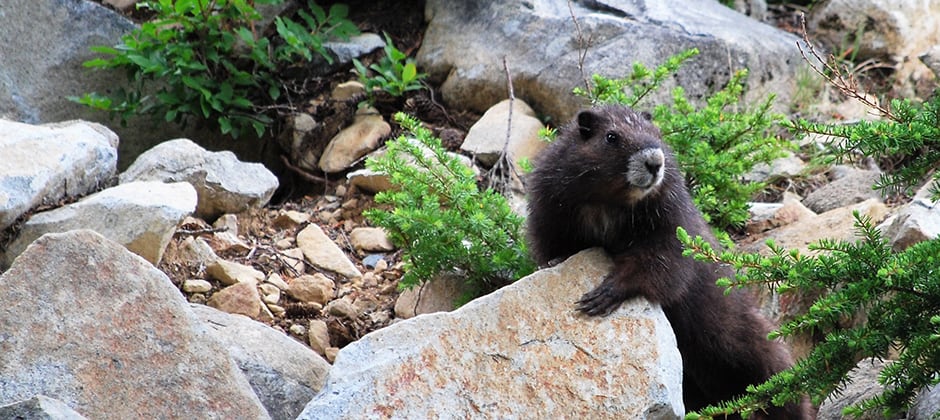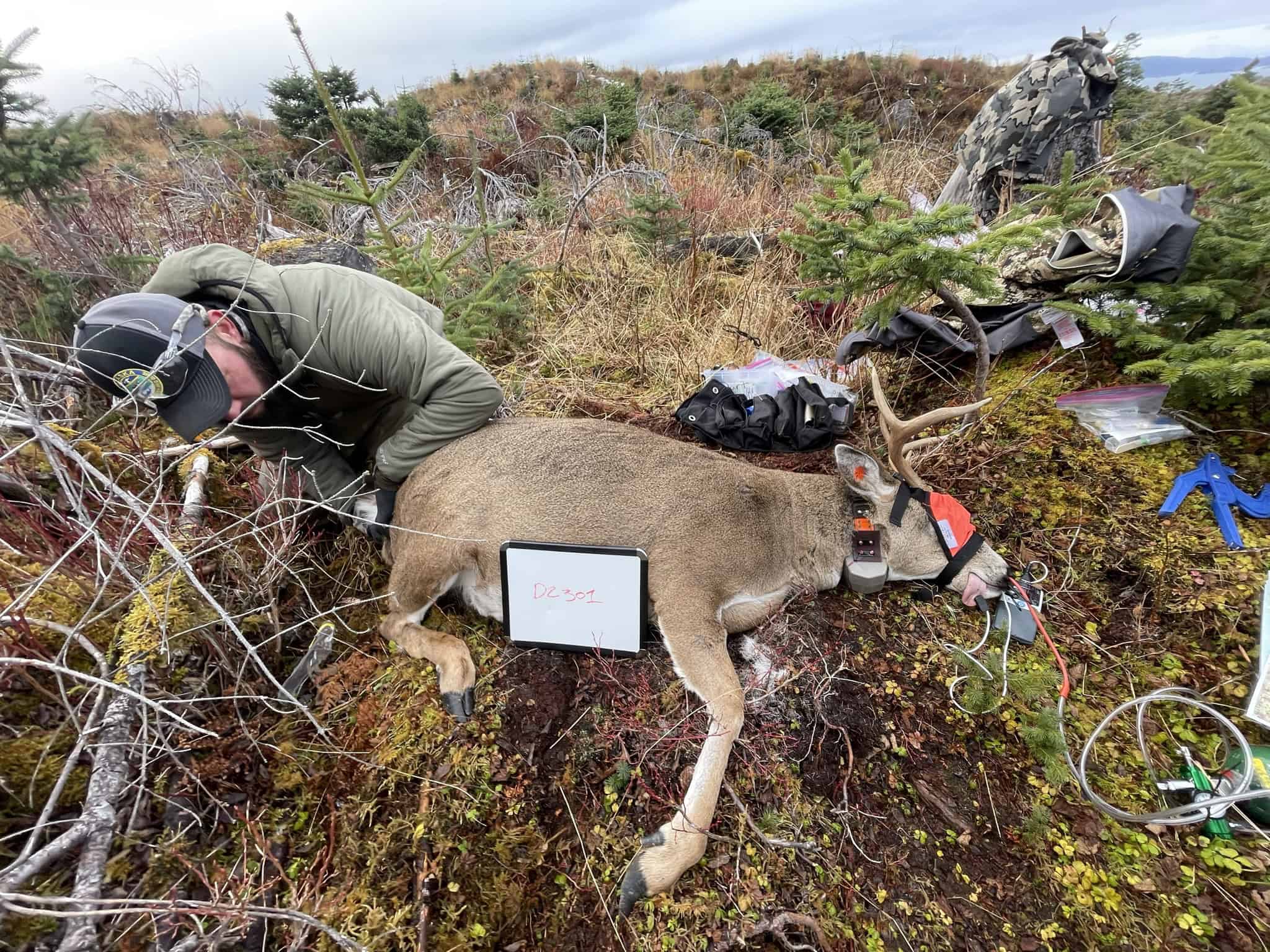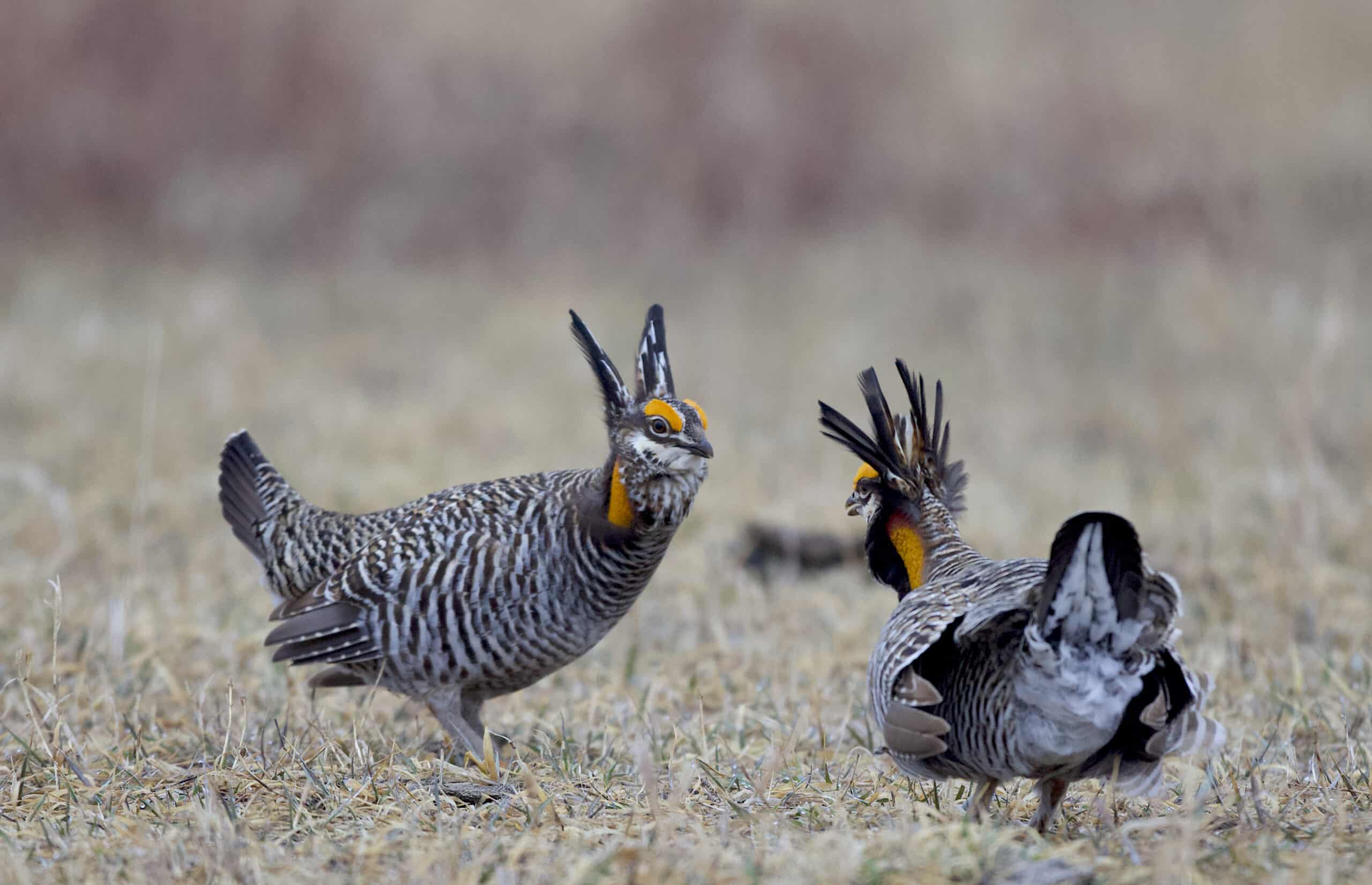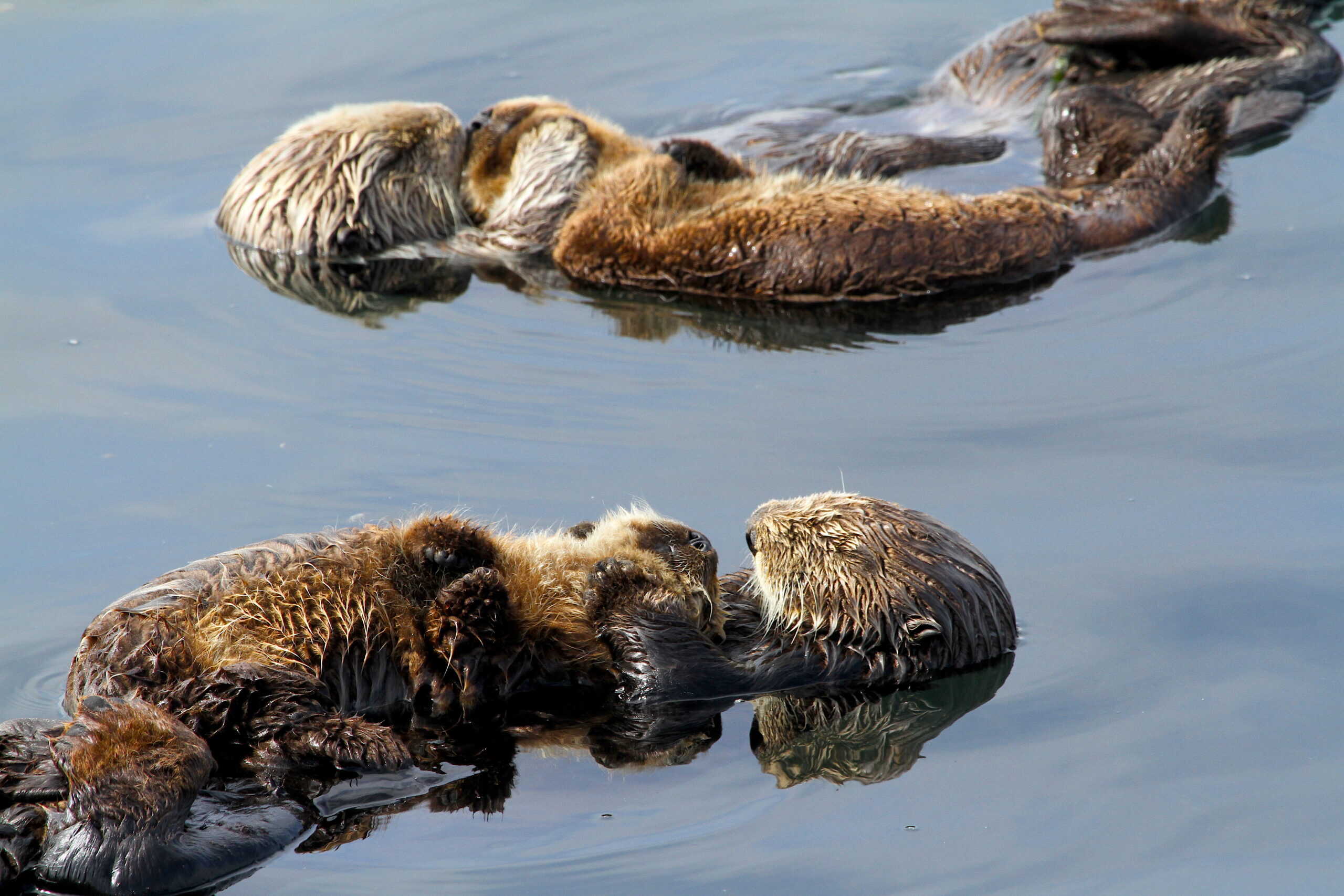Share this article
Ski resort sojourn helps captive-bred marmots survive wild
Releasing captive-bred marmots into a “cushy” ski resort area for a year improves their chances of surviving predation and teaches them how to hibernate.
“What we found is that you’re best off, if you start in captivity, to have this cushy introduction to the wild in Mount Washington,” said Sarah Converse, unit leader with the U.S. Geological Survey’s Washington Cooperative Fish and Wildlife Research Unit and an associate professor at the University of Washington. “It’s a safe place to learn before we send you out into the real world.”
Vancouver Island marmots (Marmota vancouverensis), listed as endangered by the Committee on the Status of Endangered Wildlife in Canada (COSEWIC), only live on their namesake island off the coast of southwestern British Columbia. They face ongoing threats due to climate change, which throws hibernation times out of whack; inbreeding; and predation from gray wolves (Canis lupis), cougars (Puma concolor) and golden eagles (Aquila chrysaetos). In its 2008 assessment on the species, COSEWIC stated that fewer than 30 mature, wild-born individuals were left in the wild after zoos began to bring marmots into captivity for breeding programs aimed at conservation.
Marmots were reintroduced in subsequent years using different strategies, and Converse and her co-authors of a study published recently in Animal Conservationwanted to see which releases were the most successful.
The traditional release strategies involved releasing marmots straight into the wild in Strathcona Provincial Park in central Vancouver Island. The trouble is, captive-bred marmots don’t have a great survival rate when thrust directly out into the real world compared to wild born marmots.
“There’s a huge investment in breeding new marmots so maximizing survival of reintroductions is a big priority,” said Jamie Gorrell, a biology professor at Vancouver Island University, who was not involved in the recent study.
To try to bolster this effort, rehabilitators developed a second, so-called stepping stone strategy involving first releasing animals at Mount Washington, a ski resort area on the island that hosts a wild but semi-protected population, where the marmots spent some time acclimatizing before some were moved to Strathcona.
While putting endangered animals next to ski lifts and thousands of tourists may seem counterintuitive to their survival, it actually works out pretty well for the marmots, which hibernate during the ski season anyway.
The marmots actually lived on the mountain since the 1940s before the resort existed, according to the Marmot Recovery Foundation, one of the partners involved in this strategy. When the resort began to clear forest for ski runs, it actually opened up more space for the marmots on Mount Washington. Plus, the summer months are relatively quiet on the human front, but just busy enough to provide the marmots a buffer zone from cougars or wolves.
Marmots normally prefer to live in mountainous meadows, and part of the reason for their decline could be climate change, which is pushing the tree line higher up mountains on the island.
“The trees are moving these guys into smaller areas,” said Gorrell.
He said that clearcut logging may also have in impact. While loggers may create what looks like good habitat to a marmot, the forest eventually takes these areas back. Tree cover gives predators a better chance to sneak up on the otherwise vigilant marmots.
“Marmots have better survival when they can see the predators coming,” Gorrell said.
But once a cougar has found a marmot meadow, they often hang around to glean off the easy pickings. “A single cat going into the areas can really bring down their populations,” he said.
Researchers tracked survival using telemetry and radiotags, and found that releasing marmots directly into the provincial park only resulted in an average rate of survival into prime breeding age of 4 percent.
But the stepping stone approach more than doubled this survival rate. Marmots, which spent a year months at the ski hill before being moved to Strathcona, had a 13 percent average rate of survival into prime breeding age. They also found that it was best to release yearlings rather than 2-year old marmots.
Marmots born at the ski hill also appeared to do relatively well if moved to the provincial park, but the researchers weren’t able to track the average survival rate of these animals.
While a 13 percent survival may seem low, Converse said she’d rather than 13 percent than 4 percent. The improvement will also result in better success at a lessor cost.
Gorrell said that the stepping stone approach is great.
“I think it’s really smart the way they did it. Most wild introductions just stick the animals out there and hope for the best,” he said.
The next step in Gorrell’s work — assess how successful these captive-bred animals are at breeding in the wild through DNA analysis of wild marmots. He is currently conducting a five-year study to determine how genetically diverse and healthy the wild marmots are.
Converse agreed that this is a good next step for assessing the ultimate success of the release program. She said that it’s surprising how few studies are actually done to assess the success of release strategies, given how much money is spent on them.
“There are a lot of discussions about captive breeding as a solution to the biodiversity crisis,” she said, but she believes that conservationists can do more to ensure the success of these strategies.
Header Image: Vancouver Island marmots are endangered and endemic to the British Columbia island. ©Jamie Gorrell







